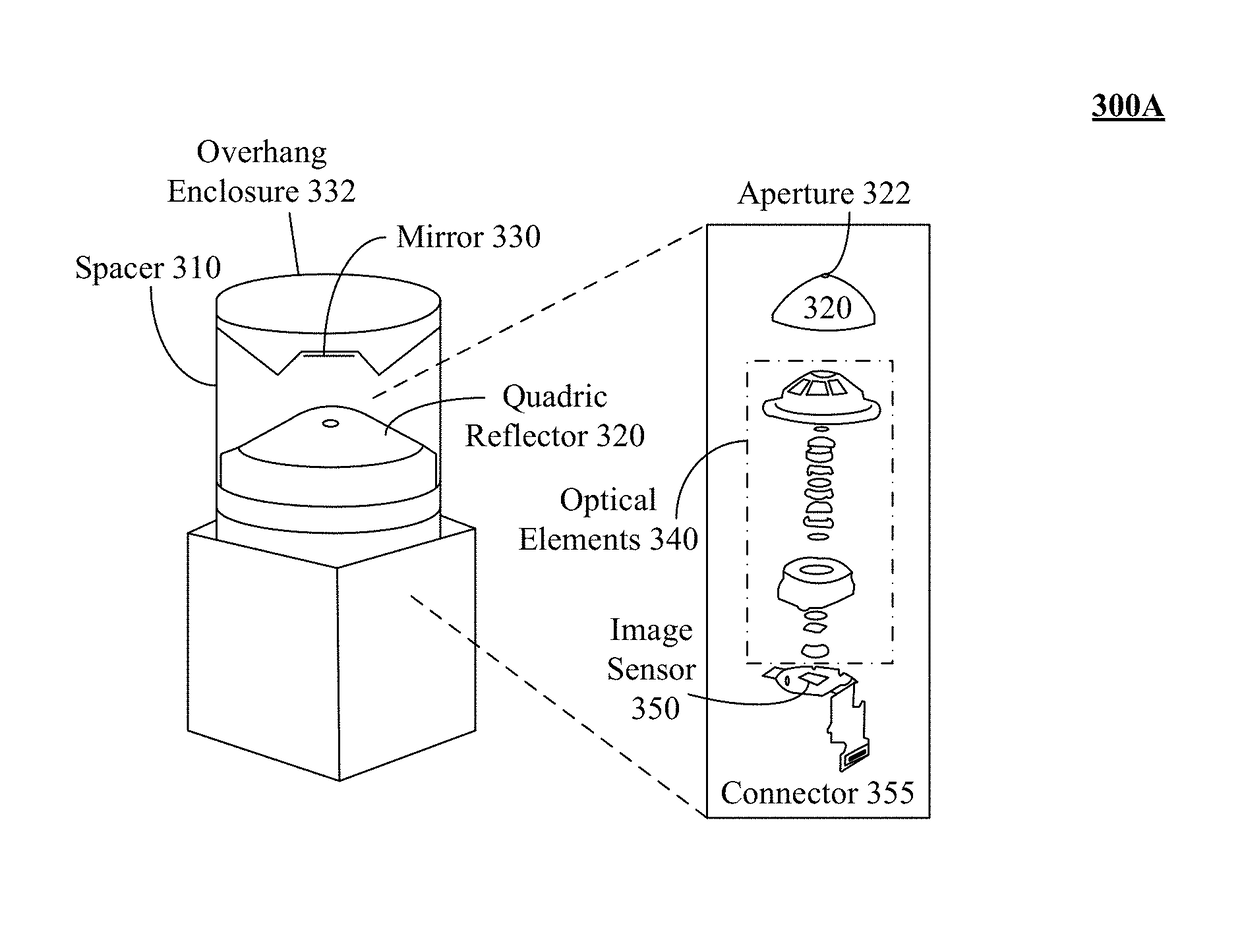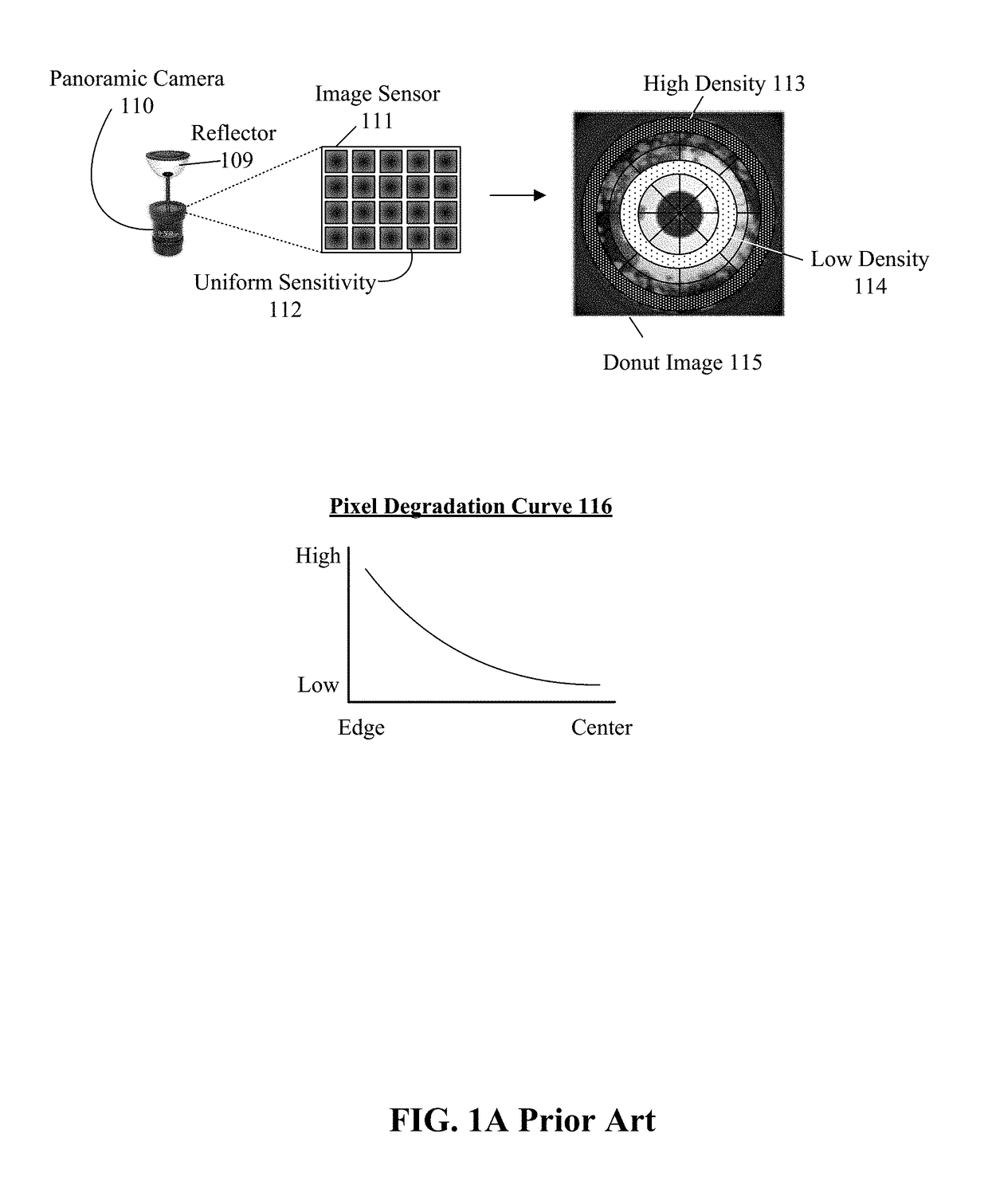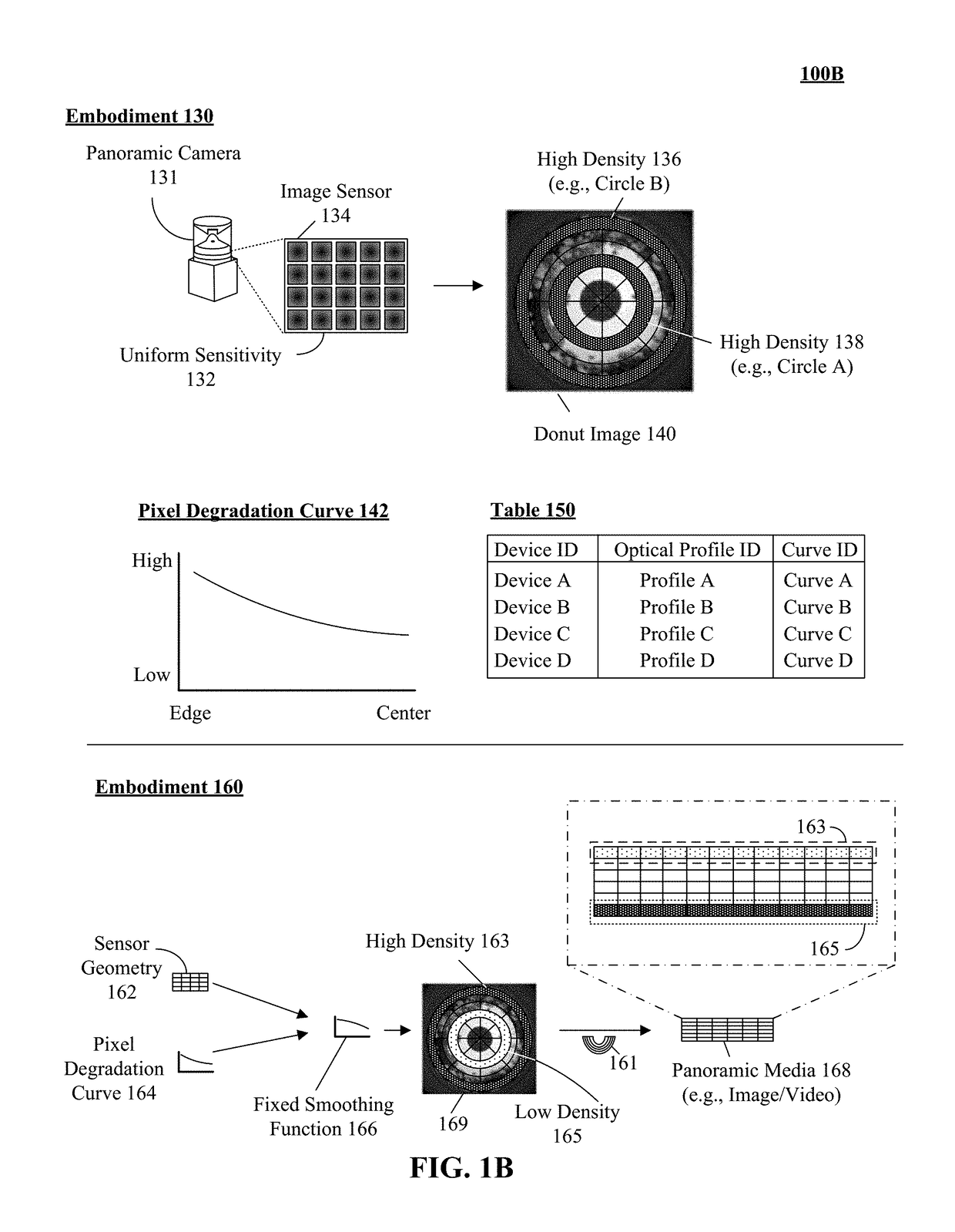Stereographic image detail uniformity of a panoramic video capture device having an optical gradient
- Summary
- Abstract
- Description
- Claims
- Application Information
AI Technical Summary
Benefits of technology
Problems solved by technology
Method used
Image
Examples
embodiment 130
[0040]In embodiment 130, image sensor 134 can be designed for uniform sensor sensitivity. That is, each subarea of the image sensor has the same relative sensitivity for converting light into electronic data as every other subarea of the image sensor 134. This uniform sensor sensitivity results in a production of a donut image 140 having a uniform pixel density. For instance, the photosensor array of the image sensor 134 can conform to a grid with an equal distribution of photosensors. The panoramic camera 131, however, has an annular optical gradient, which results in non-uniform image information loss when the image sensor 134 performs the A / D conversion. This is because the density of image information has been optically biased by the quadric reflector so that some regions of image filled data being captured by the image sensor 134 contain more optical information about the object in the first reference plane than others, yet the sensitivity of the image sensor 134 is uniform. Vi...
embodiment 160
[0043]Once the pixel degradation curve 142 for a given panoramic camera 131 and the image sensor geometry are known, a fixed smoothing function is able to be defined. The fixed smoothing function is applied when converting the donut image 140 of reference plane two into the flat image of reference plane three. To elaborate as illustrated by embodiment 160, a sensor geometry 162 and a pixel degradation curve 164 parameters can be utilized to create a fixed smoothing function for an image sensor (e.g., sensor 134) of a panoramic camera (e.g., 131). The fixed smoothing function can be determined manually, semi-automatically, or automatically. In one embodiment, the fixed smoothing function 166 can be employed to enhance a panoramic media 168. In the embodiment, the smoothing function 166 can be an additive smoothing function which can increase the pixel density of regions of media 168. For example, the function 166 can include Laplace smoothing technique. The smoothing function can be ...
embodiment 170
[0053]In embodiment 170, a panoramic camera 171 can have an image sensor 174. Image sensor 174 can have proprietary characteristics which can include non-uniform pixel density 161. That is, the photosensor array of the image sensor 174 can conform to a grid with an equal distribution of photosensors. The sensor 174 can produce an image 179 with non-uniform information density per area. That is, image 179 can have a high information density at the edges and towards the center of the image. In one instance, a more uniform pixel density of the donut image can be achieved by permitting the sensor 174 of the camera 171 to capture greater quantities of environmental light to regions of an image sensor which would traditionally be associated with low pixel density. Thus, light intensity is adjusted to compensate for the annular optical gradient.
[0054]It should be appreciated that a range of tolerances can be associated with the device (e.g., calibration, configuration settings) to enable s...
PUM
 Login to View More
Login to View More Abstract
Description
Claims
Application Information
 Login to View More
Login to View More - R&D
- Intellectual Property
- Life Sciences
- Materials
- Tech Scout
- Unparalleled Data Quality
- Higher Quality Content
- 60% Fewer Hallucinations
Browse by: Latest US Patents, China's latest patents, Technical Efficacy Thesaurus, Application Domain, Technology Topic, Popular Technical Reports.
© 2025 PatSnap. All rights reserved.Legal|Privacy policy|Modern Slavery Act Transparency Statement|Sitemap|About US| Contact US: help@patsnap.com



